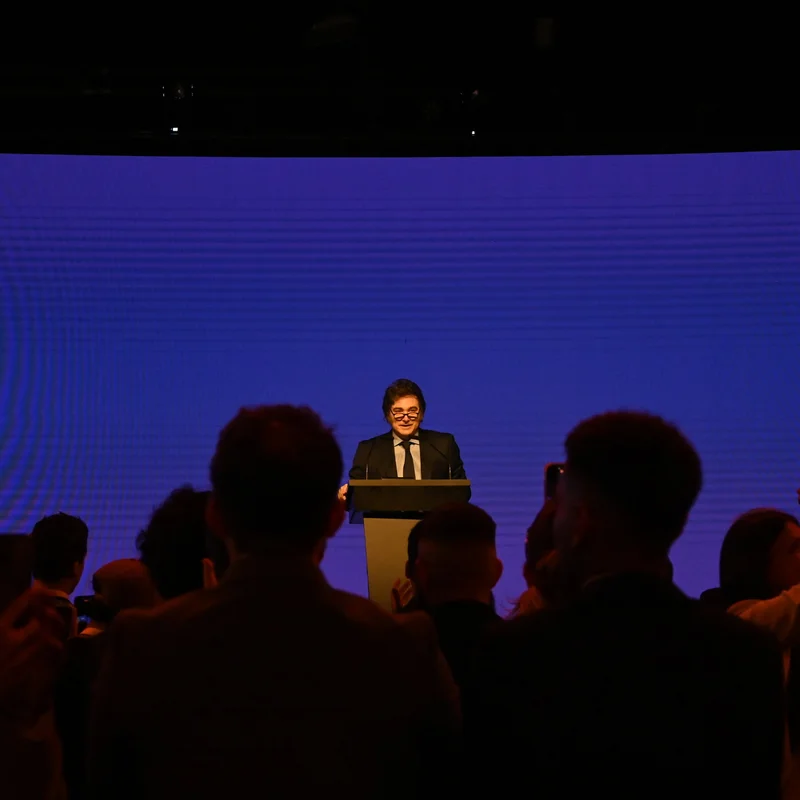Argentina’s radical economic experiment under President Javier Milei has hit a wall—just as the U.S., led by President Donald Trump, steps in with a historic $20 billion bailout. While inflation has plummeted and the budget is balanced for the first time in over a decade, ordinary Argentines are struggling with rising poverty, job losses, and soaring living costs.
From Miracle to Meltdown: What Went Wrong?
When Milei took office in December 2023, Argentina was reeling from annual inflation of over 211% . His self-described “chainsaw” approach—mass layoffs, subsidy cuts, and peso devaluation—quickly tamed price surges. By August 2025, monthly inflation had dropped to just 1.9%, and annual inflation fell to 33.6% [[17][18]].
But the aggressive austerity came at a steep social cost. Nearly 31.6% of Argentines still live in poverty , and public frustration is mounting. Recent polls show 54% disapprove of Milei’s leadership—a 10-point jump since June [[NYT]].
The $20 Billion U.S. Bailout: A Political Lifeline
In September 2025, as investors dumped Argentine assets and the peso plunged, the Trump administration announced an unprecedented financial rescue package:
- A $20 billion currency swap line
- Direct U.S. Treasury purchases of Argentine bonds
- Technical support from the U.S. Federal Reserve
Treasury Secretary Scott Bessent declared the U.S. is ready to do “what is needed” to protect Milei’s reform agenda . Trump, who calls Milei his “favorite president,” sees strategic value in supporting Argentina—a key source of lithium for green energy and a counterweight to Chinese influence in Latin America [[NYT]].
Why Argentina’s Reserves Matter
Milei’s fatal oversight? Not stockpiling enough hard currency. Despite balancing the budget, Argentina’s net foreign reserves remained deeply negative—hovering around –$6 billion as recently as March 2025 .
| Period | Gross FX Reserves (USD) | Net Reserves (Est.) |
|---|---|---|
| January 2025 | $22.1 billion | ≈ –$7 billion |
| July 2025 | $33.5 billion | Still negative |
| September 2025 | $39.0 billion | Improving post-bailout |
Source: Central Bank of Argentina (BCRA) [[33][35][36][37]]
Public Backlash and Electoral Risk
Milei’s party suffered a stinging defeat in a key provincial election in September 2025, signaling voter fatigue. With legislative elections approaching, his ability to pass further reforms hangs in the balance.
“Austerity is hard to swallow… at some point people get tired of waiting and they feel impoverished.”
— Andrei Roman, CEO of AtlasIntel [[NYT]]
Many Argentines, like 27-year-old liquor store clerk Leonardo Ramírez, say the burden falls on the poor: “My grandmother can’t afford her medicine. All they do is support the wealthiest” [[NYT]].
What’s Next for Argentina?
The U.S. lifeline has bought Milei time—but not immunity. Experts warn that without structural reforms and social safeguards, the crisis could reignite.
Budget Balanced
First time since 2013
Poverty Still High
31.6% in H1 2025
For deeper insights into Latin American economic policy, see our analysis on [INTERNAL_LINK:latin-america-economy].
For more on U.S. foreign economic interventions, visit the U.S. Department of the Treasury.




